The Ultimate Guide to Finding the Best Rebounder for the Elderly
Discover how to find the best rebounder for the elderly with safety, comfort, and science-backed benefits to boost health, balance, & fitness.
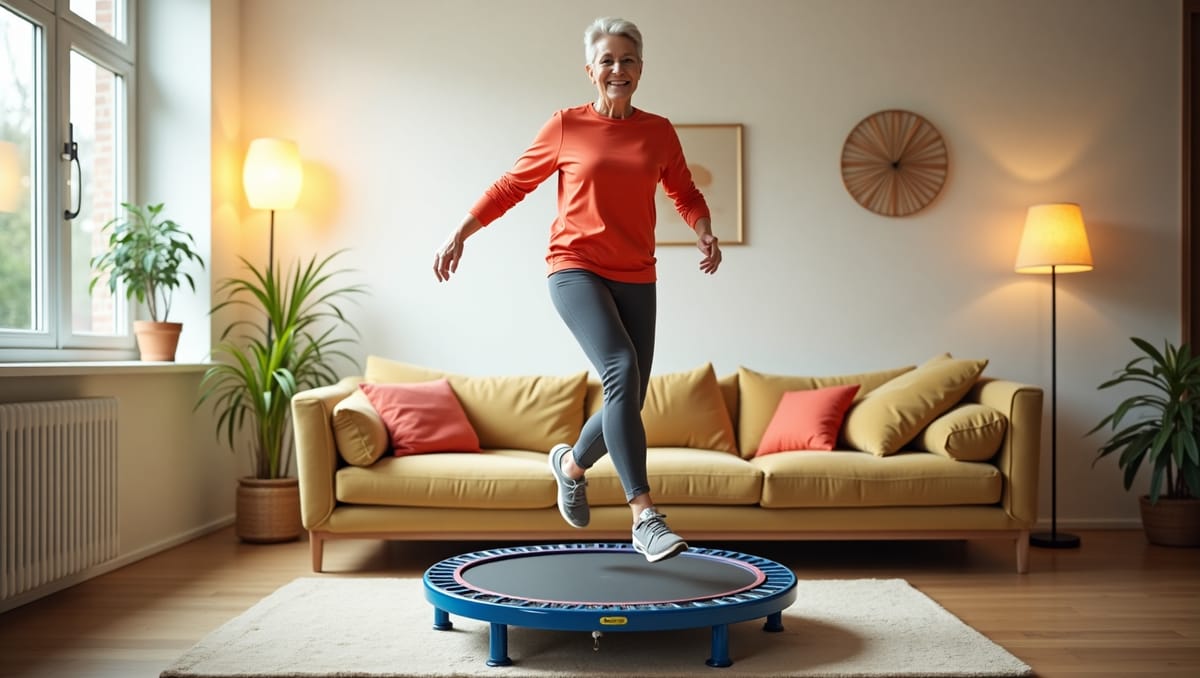
As people age, maintaining mobility, balance, and overall fitness becomes more important than ever. One fun, low-impact, and effective way to stay active is rebounding — bouncing on a small trampoline. Not only is it enjoyable, but it also offers cardiovascular, lymphatic, and muscular benefits without putting excessive strain on the joints.
The Growing Popularity of Rebounding for the Elderly
Recent health and wellness trends show that more seniors are turning to rebounders for at-home workouts. According to the Centers for Disease Control and Prevention (CDC), older adults should engage in at least 150 minutes of moderate-intensity aerobic activity each week, combined with balance and strength training. Rebounding checks all these boxes in a compact, easy-to-use form.
Science-Backed Benefits of Rebounding
A study published in the Journal of Applied Gerontology found that rebounding can improve balance and reduce fall risk in older adults, while also enhancing cardiovascular fitness.
Why This Guide Will Help You
This ultimate guide will walk you through everything you need to know about finding the best rebounder for the elderly — from safety features and durability to comfort and portability. Whether you are a senior looking to boost your health or a caregiver searching for the safest option, this resource is designed to help you make an informed, confident choice.
Buyer’s Guide
How to Find the Best Rebounder for the Elderly
Choosing the right rebounder is crucial for safety and effectiveness. Here’s what to look for when shopping for the best rebounder for the elderly:
1. Look for a Safety Handrail
This is non-negotiable. A sturdy, adjustable handrail provides critical stability and support, allowing you to maintain balance while exercising. It is the single most important feature for fall prevention and peace of mind.
2. Bungee Cord vs. Steel Springs
- Bungee Cords: These offer a much softer, quieter bounce. This is ideal for sensitive joints, as they absorb more of the impact, making the workout gentle on knees, hips, and ankles.
- Steel Springs: These provide a firmer, more vigorous bounce. While durable, they can be louder and provide a slightly harder landing, which may not be suitable for those with joint pain.
For the elderly, a bungee cord system is almost always the superior choice for a safe, low-impact experience.
3. Stability and Frame Construction
A wide, sturdy frame is essential. Look for non-slip feet and a weight capacity that is well above your weight. This ensures the rebounder remains stable and doesn't tip or slide during use.
4. Mat Size and Quality
A larger mat provides more surface area, giving you more room to move without the risk of stepping off. The mat itself should be made of a durable, non-slip material to provide a secure footing.
5. Portability and Storage
Consider your living space. If you need to put the rebounder away after each use, a foldable model is an excellent option. However, prioritize a stable, non-folding frame if it will remain in a dedicated space.
Top 5 Rebounders for the Elderly
Here are five top-selling rebounders on Amazon that are highly rated for seniors, based on their safety features, stability, and quality.
HYD-Parts 40" 48" Exercise Rebounder/ Mini Trampoline
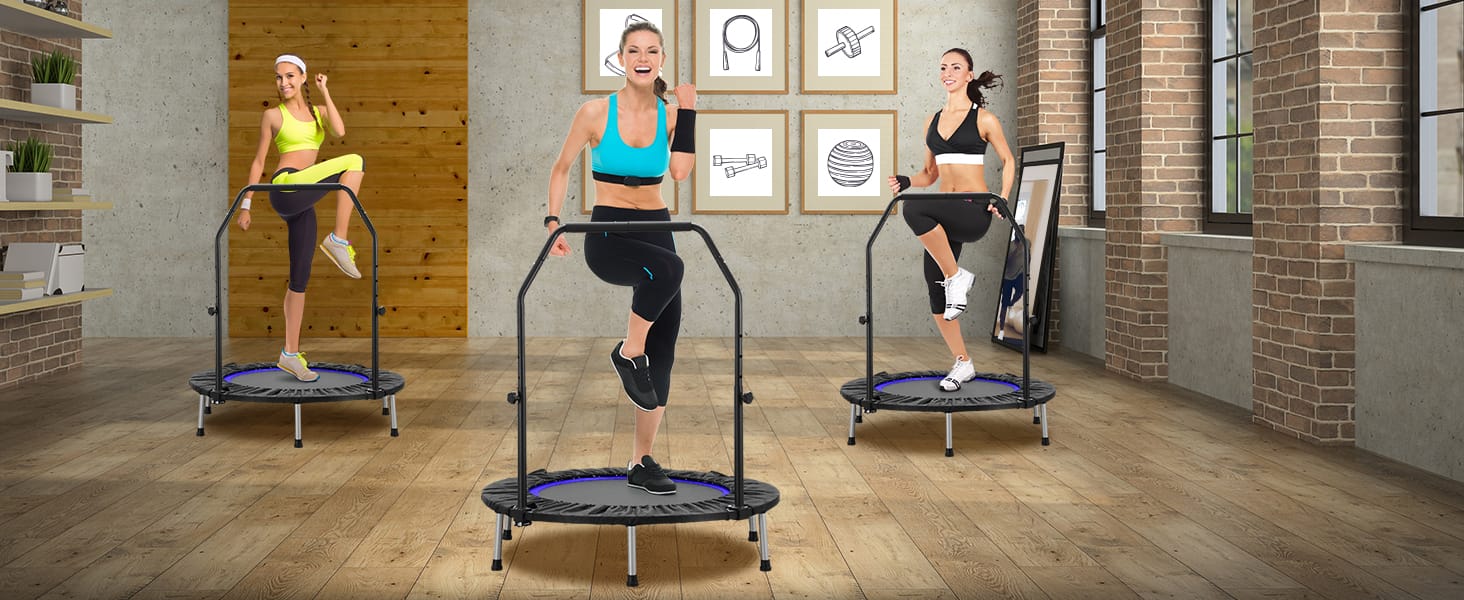
This is a top-selling rebounder specifically designed with seniors in mind. Its robust frame, combined with a full-circle safety handle, makes it a fan favorite for its stability and security. It offers a firm, reliable bounce that is perfect for balance training and gentle cardio.
- Pros:
- Comes with a heavy-duty, adjustable safety handrail.
- Wide, stable base and non-slip feet.
- High weight capacity for added security.
- Cons:
- Uses steel springs, which can be less forgiving on joints than bungee cords.
- Non-foldable design, making storage more challenging.
- Expert Rating: 4.5/5 - An excellent choice for maximum stability and support.
BCAN Foldable 40"/48" Fitness Trampoline with Bungees
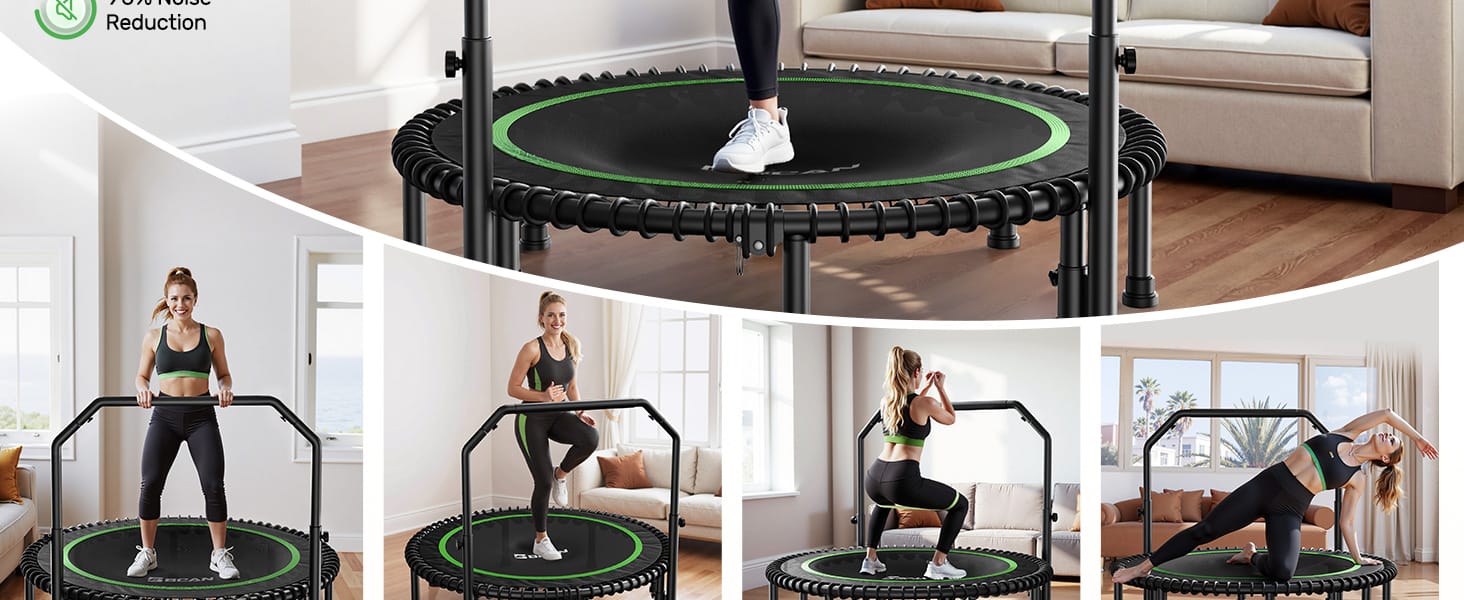
This premium model uses a high-quality bungee cord system to provide an exceptionally soft and quiet bounce. It's an ideal option for those with joint pain or who prefer a very gentle, lymphatic-drainage-focused workout. The included safety bar is also a bonus.
- Pros:
- Ultra-low impact due to the bungee cord suspension.
- Very quiet operation, perfect for apartments.
- Premium build quality and a smooth bounce.
- Cons:
- Higher price point than many spring-based models.
- The bungee system can feel slightly less firm, which may take some getting used to.
- Expert Rating: 4.8/5 - The best option for joint health and a quiet workout.
The Foldable Fitness Rebounder with Handle
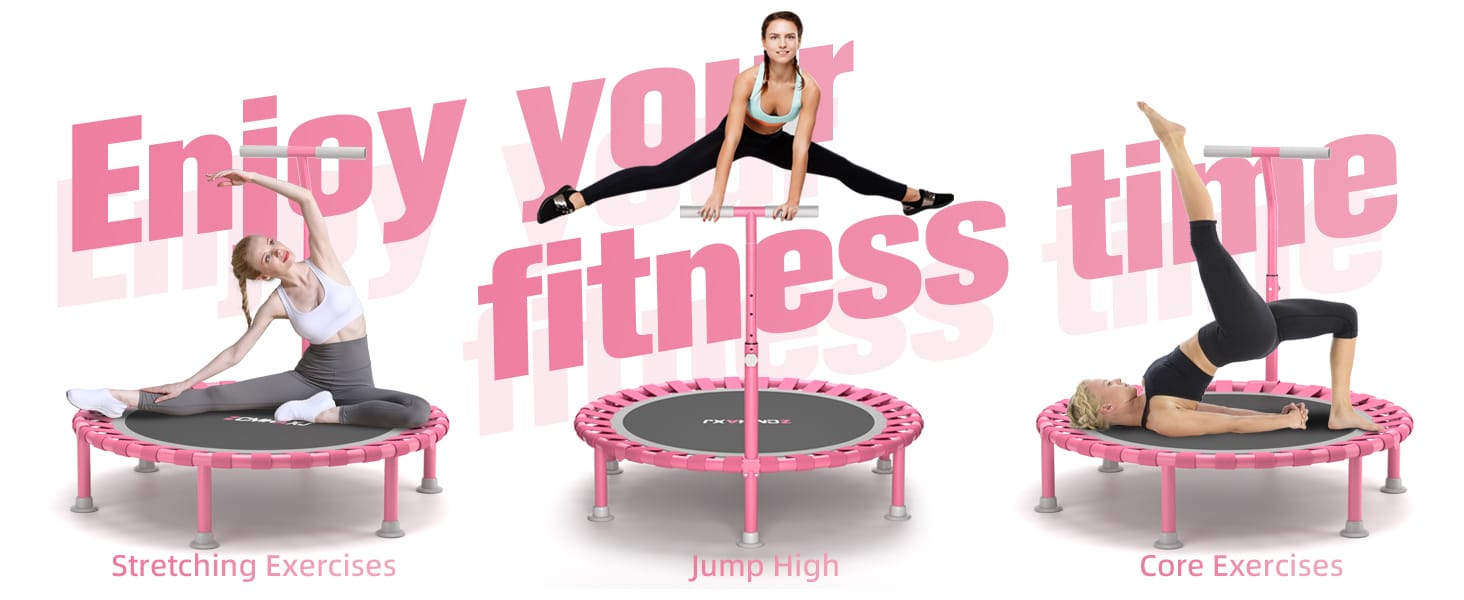
For those with limited space, this foldable rebounder is a game-changer. It combines the crucial safety handle with a convenient design that allows you to easily store it under a bed or in a closet. The bounce is a good balance between firmness and joint-friendliness.
- Pros:
- Foldable for compact storage.
- Includes a full-circle safety handle.
- Affordable, offering great value for money.
- Cons:
- The folding mechanism may compromise some long-term stability.
- Assembly can be slightly more complex than non-folding models.
- Expert Rating: 4.2/5 - A great all-around choice for convenience and a safe workout.
The Max-Stability Safety Rebounder
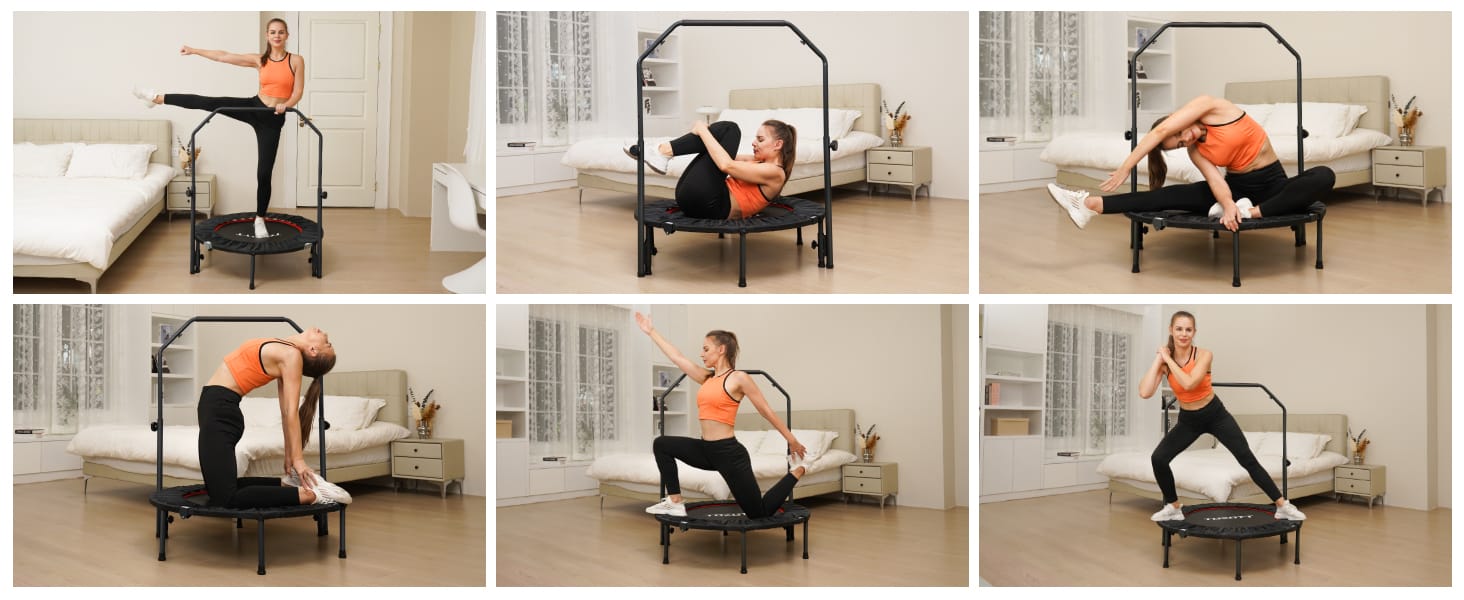
This is a heavy-duty option with a reinforced frame and an extra-wide mat, making it one of the most stable choices available. The handle is positioned for optimal balance assistance, and the durable steel springs provide a consistent, predictable bounce. It is an ideal choice for heavier individuals or those who want a robust, secure piece of equipment.
- Pros:
- Exceptional stability with a reinforced steel frame.
- Extra-high weight capacity.
- A large mat provides a huge surface area.
- Cons:
- Large and heavy, making it difficult to move.
- The steel springs may not be as gentle on joints as bungee cords.
- Expert Rating: 4.6/5 - Top-tier stability and a very secure feel.
BCAN Foldable Mini Trampoline with Durable Bungees

This mid-range rebounder strikes a great balance between price, features, and performance. It comes with a T-shaped handle for support and uses a combination of springs and mat tension to create a bounce that is both supportive and low-impact.
- Pros:
- Excellent balance of price and features.
- T-shaped handle provides targeted support.
- Durable construction with good non-slip feet.
- Cons:
- The T-shaped handle may feel less secure than a full-circle bar for some users.
- Assembly can be a bit tricky.
- Expert Rating: 4.4/5 - A solid, value-driven choice for most users.
Frequently Asked Questions
About Rebounders for the Elderly
Q. Is a rebounder safe for seniors to use?
Answer: Yes — when used correctly, a rebounder (mini trampoline) can be safe and highly beneficial for seniors. Many physical therapists recommend rebounder exercises for older adults because they provide low-impact cardiovascular activity that’s easier on the joints compared to walking or jogging on hard surfaces.
Rebounding can help improve balance, coordination, lymphatic circulation, and bone density, all of which are important for healthy aging. That said, safety is key. Seniors should keep these points in mind:
- Choose a high-quality rebounder with a sturdy frame, non-slip mat, and strong springs or bungee cords.
- Use support — many rebounders come with a stability bar or handle to help with balance.
- Start slow with gentle bounces rather than high jumps.
- Wear proper footwear or go barefoot to avoid slipping.
- Check with a doctor before starting, especially if you have balance issues, heart conditions, or joint problems.
When done in a safe, controlled way, rebounding can be a fun and effective way for seniors to stay active at home — boosting mood, energy, and mobility without putting too much strain on the body.
Q. How can a rebounder help with osteoporosis?
Answer: A rebounder (mini trampoline) can be surprisingly beneficial for people with osteoporosis when used correctly and with your doctor’s approval. The gentle, low-impact bouncing motion stimulates your bones, joints, and muscles without the harsh impact you might get from running or jumping on hard surfaces. This type of movement encourages bone remodeling — a natural process where your body replaces old bone with new, stronger bone — which is key for slowing down bone loss.
Rebounding also helps improve balance, coordination, and muscle strength, which can reduce your risk of falls — a major concern with osteoporosis. Since it’s done on a cushioned surface, it’s easier on your joints while still providing the slight gravitational stress bones need to stay healthy.
If you’re new to rebounders, start slowly with gentle bounces (your feet don’t even have to leave the mat) and consider holding onto a support bar for extra stability. Always check with your healthcare provider before beginning, especially if you have advanced osteoporosis or a history of fractures. Done safely, rebounding can be a fun and effective way to support bone health right in your living room.
Q. What are the main benefits of rebounding for the elderly?
Answer: Rebounding — exercising on a mini trampoline — offers several benefits for older adults, and it’s surprisingly gentle on the body compared to many traditional workouts. Here are some of the main advantages:
- Low-Impact on Joints
Unlike running or high-impact aerobics, rebounding cushions every step. This means less strain on knees, hips, and ankles, making it easier for older adults to stay active without aggravating existing joint pain or arthritis. - Improves Balance and Coordination
The gentle bounce challenges the body to stabilize itself, which helps improve balance, coordination, and core strength. These benefits are key for preventing falls — one of the most common risks for seniors. - Boosts Cardiovascular Health
Even light bouncing raises the heart rate, improving circulation and supporting heart health. It’s a fun, easy way to meet recommended cardio activity levels without leaving the comfort of home. - Strengthens Bones and Muscles
The repeated motion of bouncing provides weight-bearing exercise, which can help slow age-related bone loss (osteoporosis) and maintain muscle tone. - Supports Lymphatic Drainage
Rebounding naturally stimulates the lymphatic system, which helps remove toxins and boosts immune function — something that’s especially important as we age. - Mood and Energy Booster
The rhythmic motion and release of endorphins can reduce stress, improve mood, and increase energy levels, leaving you feeling more alert and positive.
For many older adults in the US, the convenience of rebounding at home makes it easy to stay consistent with exercise. Just remember: always check with your doctor before starting, and start slowly with short sessions to let your body adjust.
Q. How do I get started with a rebounder if I'm new to it?
Answer: If you’re new to rebounding, the key is to start slow and keep safety first — especially if you’re using it for fitness, recovery, or healthy aging.
Here’s a simple step-by-step approach to get started:
- Choose the Right Rebounder
Look for a sturdy rebounder with a stable frame, non-slip mat, and strong springs or bungees. For beginners, a model with a support bar can help with balance and confidence. - Set Up in a Safe Space
Place your rebounder on a flat surface with plenty of clearance around it. Make sure the floor is non-slippery and there’s good lighting. - Wear Proper Shoes (or Go Barefoot)
Supportive sneakers can protect your joints, but many people prefer going barefoot for better grip and natural movement. Try both to see what feels right for you. - Start with Gentle Bounces
You don’t need to jump high. Begin with “health bounces” — small, controlled movements where your feet stay close to the mat. This gets your lymphatic system moving without overloading your joints. - Build Gradually
Start with just 2–5 minutes a day. As your balance and stamina improve, you can work up to 15–20 minutes, adding variations like side steps, gentle twists, or jogging in place. - Listen to Your Body
Rebounding is low impact, but it’s still exercise. If you feel dizzy, overly fatigued, or have joint pain, take a break and adjust your intensity. - Make It Fun
Play your favorite music, follow beginner rebounder workout videos, or treat it as a short daily energy boost instead of a chore.
Bonus tip: If you have health conditions (like arthritis, balance issues, or recent injuries), check with your doctor before starting. Many physical therapists recommend rebounders for gentle cardio and lymphatic drainage, but personal safety always comes first.
Bottom line: Start small, keep it safe, and have fun — you’ll be surprised how quickly rebounding can boost your energy, balance, and mood.
Q. What's the difference between a cheap and an expensive rebounder?
Answer: The main differences between a cheap and an expensive rebounder come down to build quality, bounce feel, durability, and comfort.
- Bounce & Joint Impact – Cheap rebounders usually use basic metal springs and a stiffer mat, which can create a jarring bounce that’s harder on your knees, hips, and back. High-quality rebounders often use bungee cords or advanced spring systems that give a smoother, quieter bounce, reducing impact on your joints.
- Durability – Less expensive rebounders tend to be made with lighter frames and cheaper stitching, which may wear out faster, especially with regular use. Premium models use reinforced steel frames, high-grade mats, and replaceable parts, so they can last for years.
- Noise Level – Budget rebounders can squeak or creak over time due to lower-grade springs and joints. Expensive models are often engineered for near-silent performance, making them more enjoyable for home workouts.
- Stability & Safety – A higher-end rebounder is generally more stable, with better grip on the floor and sturdier legs, so it feels safer when you’re bouncing.
- Overall Comfort – If you plan to use it regularly for fitness or health reasons, the comfort of a premium rebounder can make a huge difference in whether you stick with it.
Bottom line: If you’re bouncing just for fun or on a very tight budget, a cheap rebounder might be fine. But if you care about joint protection, longevity, and a smooth, enjoyable workout, investing in a quality rebounder can be worth every penny—especially for seniors or anyone using it for daily exercise.
Key Takeaways
Choosing the best rebounder for the elderly is about prioritizing safety, stability, and comfort. By selecting a model with a secure handrail and a low-impact bungee cord system, you can unlock a fun, effective, and joint-friendly form of exercise that will help you improve your balance, strengthen your body, and enjoy a healthier, more active life.
